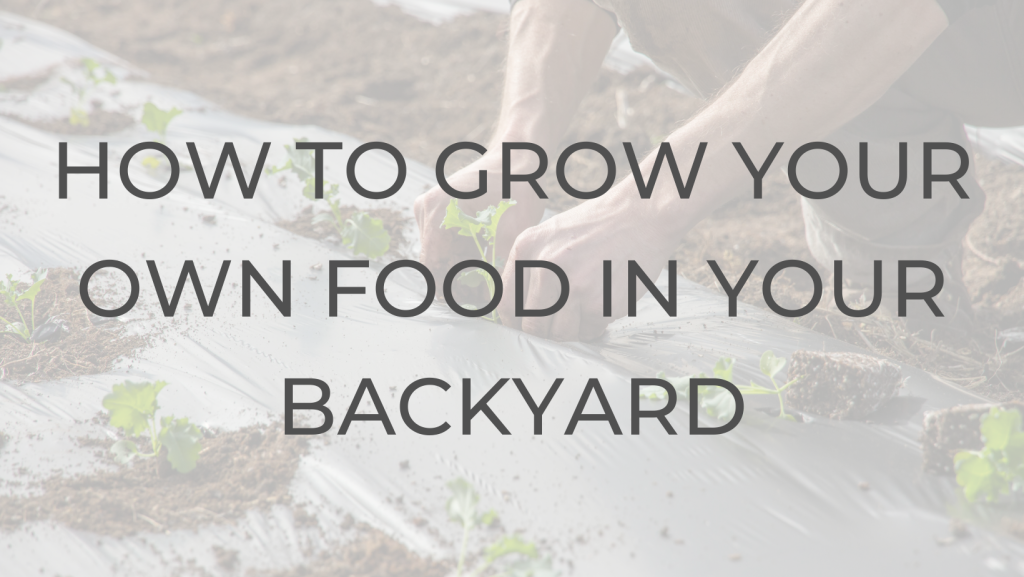
Even though growing food in your backyard involves many steps, it’s actually much easier than you might think. All it takes is a tiny bit of research, some hard work, a healthy amount of patience, and a consistent schedule. But before you go out and buy bags of soil and every seed you can think of, check out these four simple tips on getting started.
Tip #1. Pick a Spot
When choosing a spot for your sustainable garden, you’re going to want lots of sunlight. So, remember to pick an area with a lot of direct sun exposure.
You’re also going to want to water your garden consistently, so you should also pick a location that is near a water source. Ideally, you won’t have to stretch a water hose across an entire acre of land. There are also drip, soaker, self-watering, and timer systems that you can set up to do most of the watering for you.
And if you don’t have enough room outdoors, don’t worry. You can also grow food indoors or create a vertical garden, which utilizes much less space! Wherever you set up your garden, just make sure it’s an ideal place for food to grow.
Tip #2. Invest in Good Soil
Soil is probably the most essential consideration when growing your own food. Unless you’re extremely lucky, the dirt in your backyard probably won’t be ideal for sustainable gardening. And if the soil isn’t good enough to sustain life, nothing will grow in it.
So, do some research and choose a nutrient-rich soil meant for growing food. When in doubt, ask a professional at your nearest garden center or nursery.
Tip #3. Decide What You Want to Grow
There are countless veggies, fruits, herbs, and other things that you can grow, but which ones are right for you? For starters, you should only produce items that you and your family want to eat. For example, there’s no point in growing tomatoes if you’re never going to eat them.
Of course, that still leaves many options on the table. You can grow nuts, beans, and other legumes which are great additions to a balanced diet. On the vegetable side, you can grow peppers, lettuce, squash, potatoes, cucumbers, and carrots.
On the fruit side, you can grow tomatoes, melons, and berries. And if you have enough room, why not throw up an apple or orange tree for good measure?
And don’t forget about herbs! Herbs are especially easy to grow and maintain, so make sure you stock up on rosemary, basil, thyme, parsley, sage, dill, and much more!
Tip #4. Create a Schedule
Once you have everything planted and ready to go, it’s time to create a schedule. Consistency is critical when growing food, so you must stay on top of it.
In your schedule, you should include watering, cultivating your soil, getting rid of weeds, pruning, and harvesting the food when it’s fully grown. Of course, your timeframes will differ depending on what you decide to grow, so try to keep track of everything in a way that makes sense to you.
Looking for a New Place to Plant Some Roots?
Are you looking for a new place to plant some roots (literally)? If your current home isn’t the right fit for all your sustainable gardening aspirations, contact the Welch Team today! Our team specializes in finding beautiful homes in Northeast Florida.
Also, don’t forget to grab a free buyer’s guide while you’re here!





